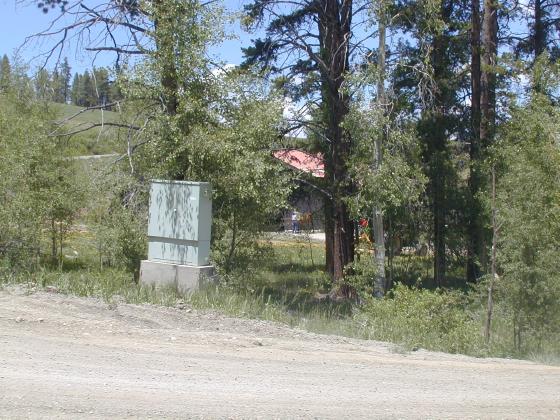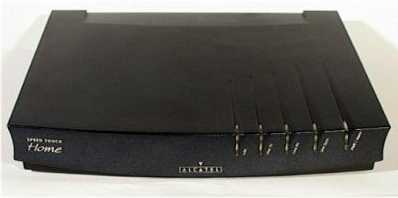 |
Your Internet connection starts with the
Colorado Internet Cooperative Association,
located in Boulder. |
 |
Our connection to the Colorado Internet Cooperative Association
is by means of NeTrack, also located in
Boulder. NeTrack encapsulates Internet packets into frame relay frames and
sends them toward O&L on a T1 line. |
 |
The connection to NeTrack is by means of a frame relay T1 data
line. Here is part of the T1 equipment, located in O&L's telco room in
Dillon. |
 |
The connection to the T1 line is by means of O&L's Adtran
TSU (T-1 service unit), located in O&L's Dillon office. |
 |
The high-speed data line from the TSU is connected to O&L's
Cisco router by means of a V.35 cable. The router opens the frame relay frames
and extracts the Internet packets. The packets are encapsulated in ethernet
packets. This is also located in O&L's Dillon office. |
 |
From the Cisco router, your connection goes via 10base-T
ethernet to O&L's Cabletron managed ethernet switch, in O&L's Dillon
office. |
 |
From the switch, your connection goes via 10base-T ethernet to
O&L's AP-10 microwave access point, in O&L's Dillon office. The access
point removes the Internet packets from the ethernet packets and encapsulates
them in 802.11 microwave packets. |
 |
From the AP-10, the Internet packets are sent via 802.11
protocol to O&L's 16-decibel antenna that is pointed toward Ruby Ranch. The
antenna is on one of the decks at O&L's Dillon office. |
 |
The microwave signal is picked up by O&L's 24-decibel
antenna, located at Ruby Ranch Lot 20, that is pointed toward Dillon |
 |
The microwave signal goes to O&L's WB-10 wireless bridge
which removes the Internet packets from the 802.11 packets and re-encapsulates
them into 10base-T ethernet packets. This is also at Ruby Ranch Lot 20. |
 |
From the bridge, the Internet data pass via ethernet through
O&L's Linksys ethernet hub, at Ruby Ranch Lot 20. |
 |
From the hub, the Internet data pass to the Coop's Netopia
router, which encapsulate the data as 2B1Q SDSL data. This is also at Ruby
Ranch Lot 20. |
 |
The Netopia router is connected by a subloop to the
Cross-connect box at Emerald and Ruby Roads. |
 |
The Coop's buried cable connects to the barn, and there to the
protector. |
 |
From the protector, the DSL data pass to the Coop's DSLAM. The
DSLAM routes the data to the appropriate port, re-encapsulates the data as DSL
data, and sends the data. |
 |
We use a Siecor COSB16S1W02L central office splitter to combine
the ADSL signal with your POTS dial tone. |
 |
At your home we use a Siecor Outdoor POTS Splitter to separate
the ADSL and voice signals. |
 |
For ADSL subscribers, from the splitter the connection goes to
an Alcatel Speed Touch Home ADSL modem, and from there via 10base-T ethernet to
your computer. |
 |
For SDSL subscribers, from the DSLAM the connection goes via
2B1Q SDSL to an SDSL modem, and from there via 10base-T ethernet to your
computer. |



































